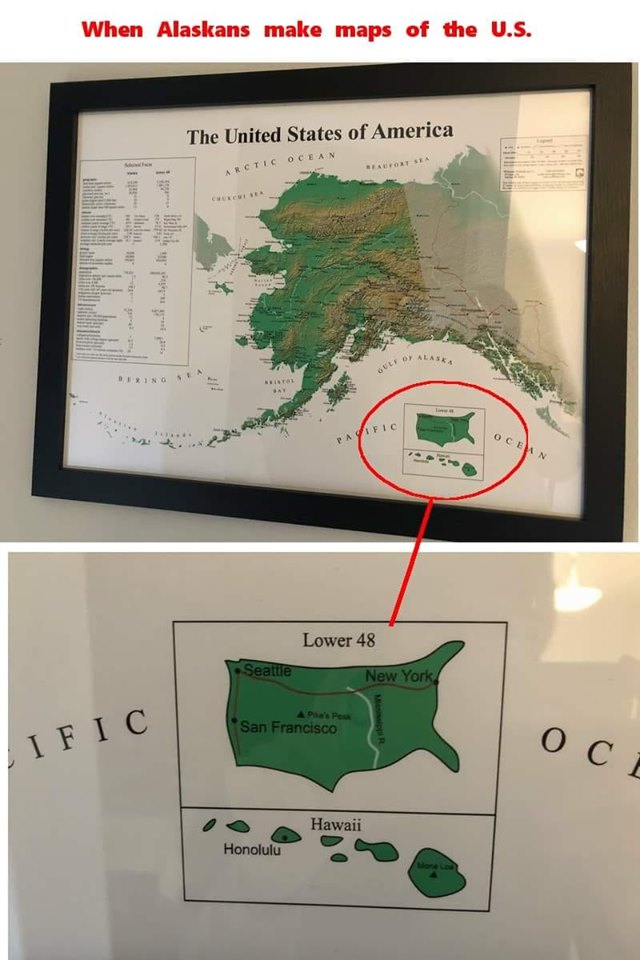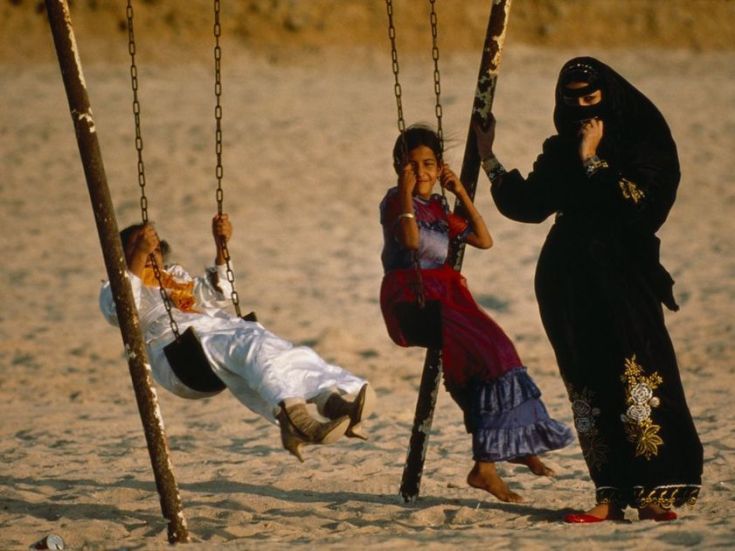If the title of this post is confusing, it’s because the map is completely unconventional (and I love it). True, it is not the title of the map, but it could have been. So often we see a map of the United States with the 48 contiguous states prominently displayed and Alaska and Hawaii scaled down, and stuck in a corner somewhere. Well, this map ingeniously inverts that paradigm.

If the inset (and the insult) are too subtle for you, here is the meme that brought this to my attention.

Questions to Ponder:
- Describe the quality of the main map compared to the quality of the inset maps.
- Why would the cartographer take the time to make this map?
- Why would someone purchase this map?








